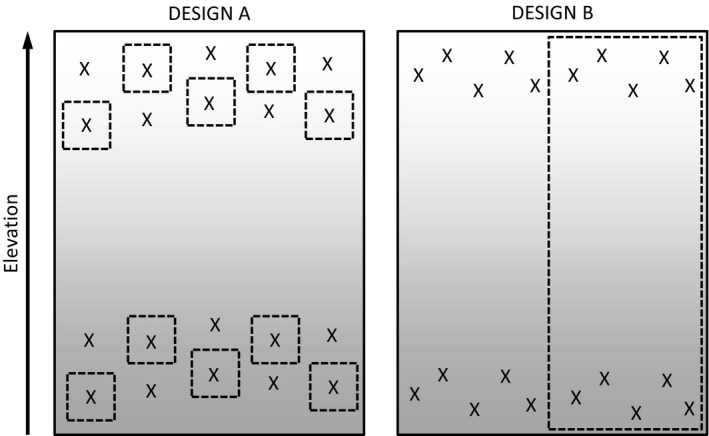Figure 1.

Hypothetical example of two experimental designs examining the effects of some form of disturbance (e.g., wildfire, grazing) on vegetation structure at two different elevations. Design A is a formal experiment, whereas Design B is a researcher's response to a natural (i.e., unplanned by the researcher) event. Dotted lines mark the perimeter of the disturbances which could be, for example, a series of experimental fires in A and a wildfire in B or a number of grazing exclosures in A vs. a landscape‐scale fence in B. Assuming that soils, slope, and aspect are more or less homogenous, at least within each studied elevational band, are the results of Design A more ecologically meaningful than those in B? Which design more adequately captures the ecological reality of wildfire or landscape‐scale alterations to grazing management? We would argue that Design A might actually sacrifice ecological reality for statistical independence as, for example, small fires cannot mimic a wildfire event and small grazing exclosures do not allow natural movement of grazers across landscapes.
